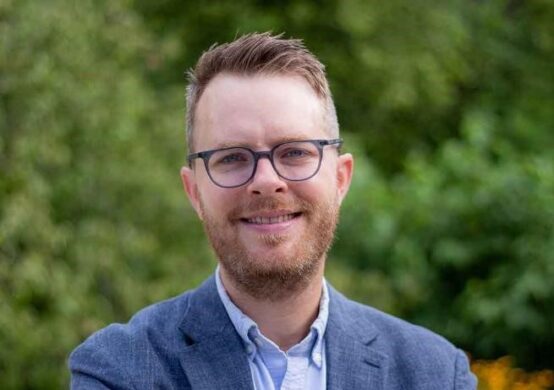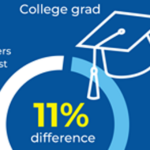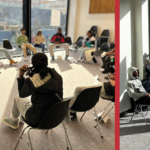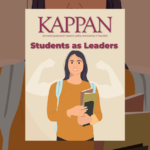Journalism researcher Jesse Holcomb points to community-oriented startups as potential models for rethinking traditional education news. It’s part of our current series on parents and education coverage.
By Alexander Russo
More resources alone won’t necessarily solve all that ails education journalism, according to longtime media researcher Jesse Holcomb.
In this new interview, the author of an influential pair of 2022 studies about education journalism (Keeping up with the ed beat, Education news in the mirror) describes how the education beat faces challenges endemic to the journalism business, including the need to demonstrate value and impact.
At the same time, the beat also needs to become less reactive, feature non-elite voices and perspectives, and better serve community members’ information needs.
“Parents feel overwhelmed and confused by school,” notes Holcomb. “Education reporters who are given the permission to see community members as their audience have a real opportunity to become an advocate for those communities.”
Education reporters who are given the permission to see community members as their audience have a real opportunity.
This interview has been edited and condensed.
For those who may not be familiar, what was the mismatch you found in your 2022 reports between what education news provides and what parents are seeking?
JH: Broadly speaking, my work did find a bit of a mismatch between what parents and guardians wanted and what local news providers were offering. But it’s not across the board. And — I want to say this really loudly and very clearly — I’m not putting this on the backs of the rank-and-file education reporters out there busting their asses every day. They’re begging for resources. They’re deep subject experts. They’re doing their best. And they really want to serve their communities.
We’ve got systemic problems that hold the education beat back just like lots of other beats.
What we see in local education coverage is that it tends to be really reactive. It’s sort of that steady drip of breaking news and latest events. A lot of education coverage is, well, news. One might ask, “isn’t that the business we’re in?” But there might be some problems associated with that, such as the tendency to overlook the information deficits communities have that wouldn’t be classified as breaking news.
Another thing we found was — something that you see in almost every beat —that it’s very top down when it comes to the people whose voices are featured in local coverage. It’s almost always official sources driving the narrative.
These are the people who are quoted, the people who are framing the coverage. It’s especially true in general interest newspapers. School officials, or superintendents, elected officials, tend to dominate. Teachers, parents, students, and community leaders? None of those groups show up in more than 15% of newspaper coverage.
A lot of education coverage is, well, news. There might be some problems associated with that.
Did you find a mismatch between what parents perceive and the news that they’re being offered?
JH: Parents were really concerned about negativity. There was this overwhelming sense that education news is a real downer, that it’s only focused on bad news, without offering successes or solutions to those problems.
However, when we went back and looked at local news coverage of schools and education, our research did not necessarily find that all coverage is negative in nature. To be sure, there’s plenty of bad news out there — and education reporters reflected that. But we really did see something of a mix.
What we found did not necessarily align with what our survey showed parents’ impressions were.
What we found did not necessarily align with what our survey showed parents’ impressions were.

Above: Parents really want useful education news. They aren’t all getting it (Nieman Lab). See also For education news — and other local news, too — consider keeping it practical (Poynter Institute).
Loss of revenue is understandably a big topic in journalism, but what are some of the other issues and dynamics that more money won’t necessarily solve?
JH: There is a resource issue that feels very existential in the news industry at large. Models are just kind of breaking. There’s also the whole question of impact and democratic value. Last but not least, there’s the audience question: Who is this work for? Who’s the audience for most of the education coverage that’s out there?
But what if we went even deeper, asking who’s the audience for most of the education coverage that’s out there? If it’s educators, leaders in the education sector, elected officials, and philanthropists, that’s a narrow and elite audience. But if you’re trying to reach parents, guardians, caregivers, and taxpayers who may or may not have children in the system, tell us how you’re doing that — and why. I’m not saying that all K-12 education coverage has to be populist. But I think it’s worth having an open conversation.
What are the obstacles holding journalism back from reconsidering the traditional approach?
JH: For one, there’s path dependency — the tendency to do things the way they’ve always been done, because it’s familiar. Also, there’s some risk aversion out there because with limited resources, it can feel like there’s no room for trial and error. I also hear from early-career journalists that it’s still the case they don’t get taken seriously. So the industry might be leaving good ideas on the table because the younger generation gets dismissed.
I’m not saying that all K-12 education coverage has to be populist. But I think it’s worth having an open conversation.
Is there anyone out there who’s really taking the lead on parent- and community-based focused coverage?
JH: One example I’ll point to is Outlier Media in Detroit. They don’t do education coverage, but I think they offer a very instructive model. I would also point to Signal Cleveland, which is now getting off the ground. But I think that they have that kind of an approach in their DNA that I’m paying attention to. Resolve Philly is another one.
What some of these relatively young, community-oriented startups have in common is that many of them are led by women of color, who haven’t always had their ideas taken seriously in institutional, legacy journalism circles and institutions. And I think what we see in organizations like Outlier and others is a really radical rethinking of what is the purpose of this work.
They’re looking for outcomes at the community level. It’s not enough to just run a really big investigative expose that might even lead to a policy change or a corrupt official losing their job. If the investigation doesn’t ultimately lead to improved communities, then there is a failure on some level.

Above: New, community-oriented startups like those above are “looking for outcomes at the community level,” according to Holcomb.
None of these you mention are legacy news outlets or even established nonprofits. Is that just the way it has to be?
JH: There are advantages to starting from scratch, but also liabilities. It’s hard to build something. Many startups will have a long, uphill road to building an audience, as well as a sustainable business model. Legacy news outlets have a different set of challenges. But I believe they can pivot, too — perhaps more slowly.
I’m glad that there’s some positive models out there, but I wish these changes were happening in education.
JH: Parents feel overwhelmed and confused by school. And this is especially true of lower-income and parents of color. Education reporters who are given the permission to see community members as their audience have a real opportunity to become an advocate for those communities. Schools are very complex. And journalists have access in ways that some parents and community members do not. That’s a real opportunity. It’s a gift.
Parents and education news (2024)
Parents need reporters — and vice versa (Trenace Dorsey-Hollins)
What parents really want (Vernée Wilkinson)
Previously from The Grade
Education journalism is stuck. What’s holding it back?
Canopy Atlanta’s 5 key elements of community-driven education coverage
Putting parents front and center
In Cleveland, community efforts fill in for school coverage
Student-centered schools coverage in Las Vegas (Lorraine Longhi)
Making education news more useful (Ruth Serven Smith)
ABOUT THE AUTHOR

Alexander Russo
Alexander Russo is founder and editor of The Grade, an award-winning effort to help improve media coverage of education issues. He’s also a Spencer Education Journalism Fellowship winner and a book author. You can reach him at @alexanderrusso.
Visit their website at: https://the-grade.org/











